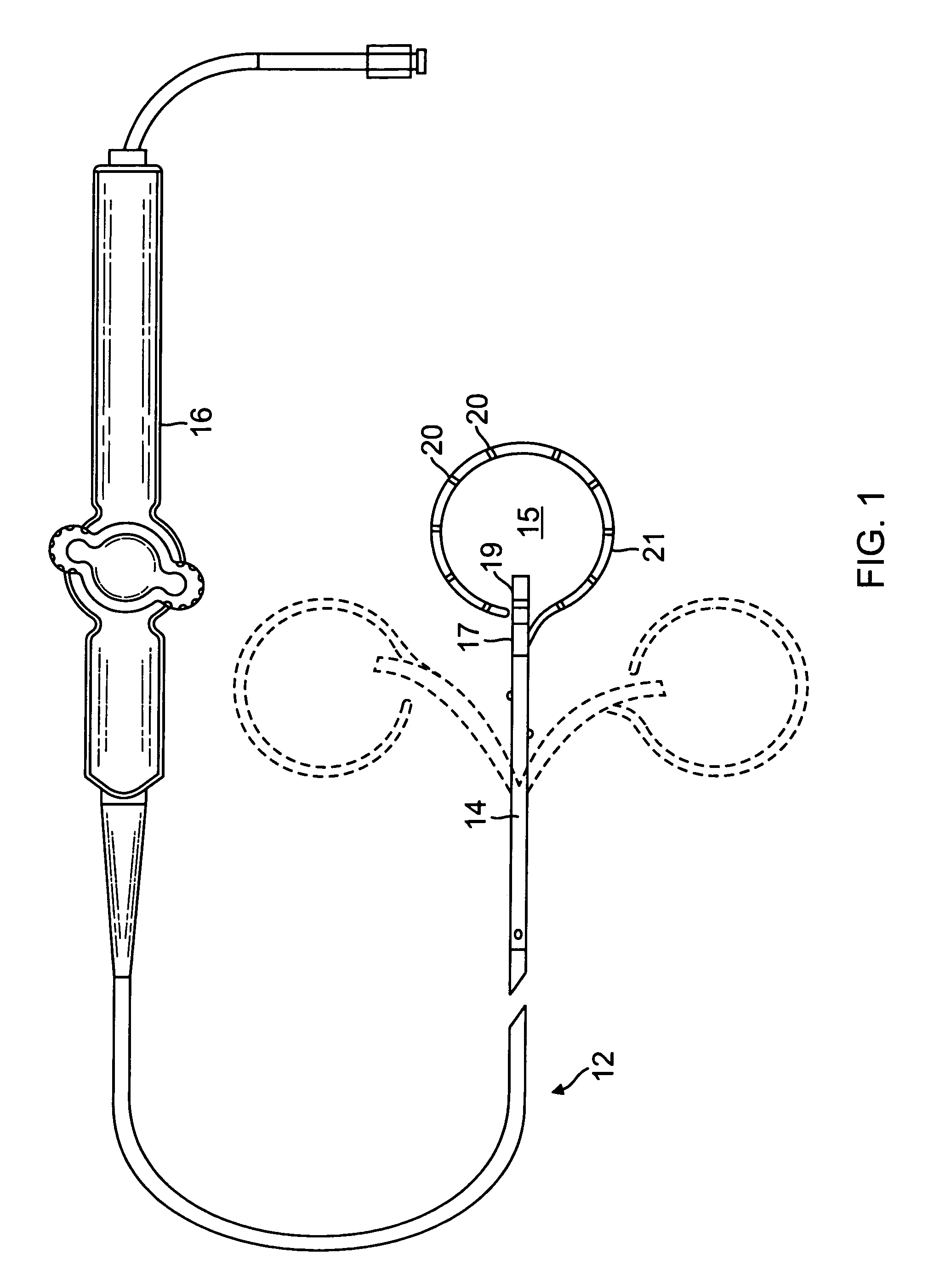Epicardial mapping and ablation catheter
a technology of epicardium and catheter, which is applied in the field of epicardium mapping and ablation catheter, can solve the problems of sudden death, life-threatening arrhythmia, and the adhesion between the parietal pericardium and the epicardium, and achieve the effect of preventing the onset of epicardial ischemia
- Summary
- Abstract
- Description
- Claims
- Application Information
AI Technical Summary
Benefits of technology
Problems solved by technology
Method used
Image
Examples
Embodiment Construction
[0053]With reference to FIG. 1, an embodiment of a catheter 10 for epicardial mapping and ablation has an elongated catheter body 12 with proximal and distal ends, an intermediate deflectable section 14 at the distal end of the catheter body 12, and a mapping and ablation electrode assembly 17 distal of the intermediate section. The catheter also includes a control handle 16 at the proximal end of the catheter body 12 for controlling deflection of the intermediate section 14. Advantageously, the electrode assembly 17 has a directional ablation electrode 19 at a distal tip section 15 and a plurality of sensing electrodes 20 mounted on a stabilizing member 21 that facilitates movement and placement of the ablation electrode 19 on an epicardial treatment site.
[0054]With reference to FIGS. 2a, 2b and 2c, the catheter body 12 comprises an elongated tubular construction having a single, axial or central lumen 18. The catheter body 12 is flexible, i.e., bendable, but substantially non-comp...
PUM
 Login to View More
Login to View More Abstract
Description
Claims
Application Information
 Login to View More
Login to View More - R&D
- Intellectual Property
- Life Sciences
- Materials
- Tech Scout
- Unparalleled Data Quality
- Higher Quality Content
- 60% Fewer Hallucinations
Browse by: Latest US Patents, China's latest patents, Technical Efficacy Thesaurus, Application Domain, Technology Topic, Popular Technical Reports.
© 2025 PatSnap. All rights reserved.Legal|Privacy policy|Modern Slavery Act Transparency Statement|Sitemap|About US| Contact US: help@patsnap.com



